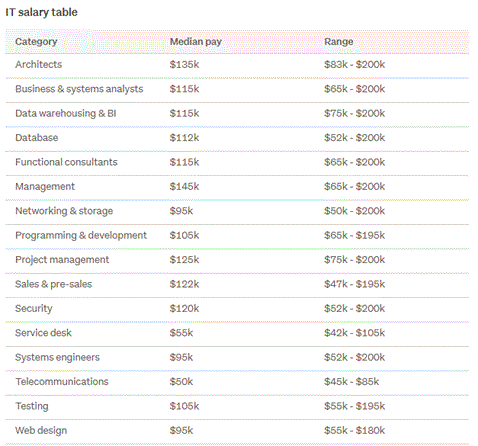计算机二级c语言上机题库
计算机二级c语言上机题库
以下是计算机二级c语言上机题库100道,只要做完了其中的题目,上机考试基本是稳稳地过,当然很多都是考试原题。
1.填空题
请补充main函数,该函数的功能是:把一个字符串中的所有小写字母字符全部转换成大写字母字符,其他字符不变,结果保存原来的字符串中。
例如:当str[N]="123
abcdef ABCDEF!",结果输出:"123 ABCDEF ABCDEF!"。
注意:部分源程序给出如下。
请勿改动主函数main和其他函数中的任何内容,仅在函数fun的横线上填入所编写的若干表达式或语句。
试题程序:
#include<stdio.h>
#include<stdlib.h>
#include<conio.h>
#define N 80
void main()
{
int j;
char str[N]=" 123abcdef ABCDEF!";
char *pf=str;
system("CLS");
printf("***original string ***\n");
puts(str);
【1】;
while(*(pf+j))
{
if(*(pf+j)>='a'&&*(pf+j)<='z')
{
*(pf+j)=【2】;
j++;
}
else
【3】;
}
printf("******new string******\n");
puts(str);
system("pause");
}
1. 改错题
下列给定程序中,函数fun()的功能是逐个比较a,b两个字符串对应位置中的字符,把ASCII值小或相等的字符依次存放到c数组中,形成一个新的字符串。
例如:a中的字符串为fshADfg,b中的字符串为sdAEdi,则c中的字符串应为fdAADf。
请改正程序中的错误,使它能得到正确结果。
注意:不要改动main函数,不得增行或删行,也不得更改程序的结构。
试题程序:
#include
<stdio.h>
#include
<string.h>
void fun(char *p,char *q,char *c)
{ int k=0;
while(*p||*q)
/**********************found***********************/
{ if (*p<=*q)
c[k]=*q;
else c[k]=*p;
if(*p) p++;
if(*q) q++ ;
/**********************found***********************/
k++
}
}
void main()
{ char
a[10]="fshADfg",b[10]="sdAEdi",c[80]={'\0'};
fun(a,b,c);
printf("The string a:"); puts(a);
printf("The string b:"); puts(b);
printf("The result :"); puts(c);
}
1. 编程题
请编写函数fun,其功能是:将两个两位数的正整数a、b合并形成一个整数放在c中。合并的方式是:将a数的十位和个位数依次放在c数个位和十位上,b数的十位和个位数依次放在c数的百位和千位上。
例如,当a=16,b=35,调用该函数后,c=5361。
注意:部分源程序给出如下。
请勿改动主函数main和其他函数中的任何内容,仅在函数fun的花括号中填入所编写的若干语句。
试题程序:
#include<stdlid.h>
#include<stdio.h>
void fun(int a ,int b,long *c)
{
}
void main()
{
int
a,b;
long c;
system("CLS");
printf("Input a,b;");
scanf("%d%d",&a, &b);
fun(a,b,&c);
printf("The result is:%ld\n",c);
}
2.填空题
请补充main函数,该函数的功能是求方程ax2+bx+c=0的两个实数根。方程的系数a、b、c从键盘输入,如果判别式(disc=b2-4ac)小于0,则要求重新输入a、b、c的值。
例如,当a=1,b=2,c=1时,方程的两个根分别是x1=-1.00, x2=-1.00。
注意:部分源程序给出如下。
请勿改动主函数main和其他函数中的任何内容,仅在函数fun()的横线上填入所编写的若干表达式或语句。
试题程序:
#include <math.h>
#include <stdio.h>
#include <stdlib.h>
void main()
{
float a,b,c, disc,x1,x2;
system("CLS");
do
{
printf("Input
a,b,c:");
scanf("%f,%f,%f",&a,&b,&c);
disc=b*b-4*a*c;
if(disc<0)
printf("disc=%f\n
Input again!
\n",disc);
}while(【1】);
printf("*******the
result*******\n");
x1=【2】;
x2=【3】;
printf("\nx1=%6.2f\nx2=%6.2f\n",x1,x2);
}
2. 改错题
下列给定程序中,函数fun()的功能是根据整型形参m,计算如下公式的值。
y=1-1/(2×2)+1/(3×3)-1/(4×4)+…+(-1)(m+1)/(m×m)
例如:m中的值为5,则应输出0.838611。
请改正程序中的错误,使它能得到正确结果。
注意:不要改动main函数,不得增行或删行,也不得更改程序的结构。
试题程序:
#include
<stdlib.h>
#include
<conio.h>
#include
<stdio.h>
double fun(int m)
{ double
y=1.0;
/**********************found***********************/
int
j=1;
int i;
for(i=2; i<=m; i++)
{
j=-1*j;
/**********************found***********************/
y+=1/(i * i);
}
return(y);
}
void main()
{
int n=5;
system("CLS");
printf("\nThe result is %lf\n" ,fun(n));
}
2. 编程题
请编一个函数void
fun(int tt[M][N], int pp[N]), tt指向一个M行N列的二维数组,求出二维数组每列中最大元素,并依次放入pp所指的一维数组中。二维数组中的数已在主函数中给出。
注意:部分源程序给出如下。
请勿改动主函数main和其他函数中的任何内容,仅在函数fun的花括号中填入所编写的若干语句。
试题程序:
#include
<stdlib.h>
#include
<conio.h>
#include
<stdio.h>
#define
M 3
#define
N 4
void
fun(int tt[M][N],int pp[N])
{
}
void main()
{
int
t[M][N]={{68, 32, 54, 12},{14, 24, 88, 58},{42, 22, 44, 56}};
int
p[N],i,j,k;
system("CLS");
printf("The riginal data is:\n");
for(i=0;i<M;i++)
{
for(j=0;j<N;j++)
printf("%6d",t[i][j]);
printf("\n");
}
fun(t,p);
printf("\nThe result is:\n");
for(k=0;k<N;k++)
printf("%4d",p[k]);
printf("\n");
}
3.填空题
请补充函数fun(),该函数的功能是:把一个整数转换成字符串,并倒序保存在字符数组str中。例如:当n=13572468时,str="86427531"。
注意:部分源程序给出如下。
请勿改动主函数main和其他函数中的任何内容,仅在函数fun的横线上填入所编写的若干表达式或语句。
试题程序:
#include<stdlib.h>
#include<stdio.h>
#include<conio.h>
#define N 80
char str[N];
void fun(long int n)
{
int i=0;
while(【1】)
{
str[i]=【2】;
n/=10;
i++;
}
【3】;
}
void main()
{
long int n=13572468;
system("CLS");
printf("*** the origial data
***\n");
printf("n=%ld",n);
fun(n);
printf("\n%s",str);
}
3. 改错题
下列给定程序中,函数fun的功能是按以下递归公式求函数值。
例如:当给n输入5时,函数值为240;当给n输入3时,函数值为60。
请改正程序中的错误,使它能得到正确结果。
注意:不要改动main函数,不得增行或删行,也不得更改程序的结构。
试题程序:
#include
<stdio.h>
/**********************found***********************/
fun(int n);
{
int c;
/**********************found***********************/
if(n=1)
c=15;
else
c=fun(n-1)*2;
return(c);
}
void main()
{
int n;
printf("Enter n:");
scanf("%d",&n);
printf("The result :%d\n\n",fun(n));
}
3. 编程题
请编写函数fun(),对长度为7个字符的字符串,除首、尾字符外,将其余5个字符按ASCII值码升序排列。
编写完程序,运行程序后输入:字符串为Bdsihad,则排序后输出为应为Badhisd。
注意:部分源程序给出如下。
请勿改动主函数main和其他函数中的任何内容,仅在函数fun的花括号中填入所编写的若干语句。
试题程序:
#include <string.h>
#include <stdlib.h>
#include <stdio.h>
#include <ctype.h>
#include <conio.h>
void fun(char *s, int num)
{
}
void main()
{
char
s[10];
system("CLS");
printf("输入7个字符的字符串:");
gets(s);
fun(s,7);
printf("\n%s",s);
}
4.填空题
数组xx[N]保存着一组3位数的无符号正整数,其元素的个数通过变量num传入函数fun()。请补充函数fun(),该函数的功能是:从数组xx中找出个位和百位的数字相等的所有无符号整数,结果保存在数组yy中,其个数由函数fun()返回。
例如:当xx[8]={135,787,232,222,424,333,141,541}时,bb[6]={787,232,222,424,333,141}。
注意:部分源程序给出如下。
请勿改动主函数main和其他函数中的任何内容,仅在函数fun()的横线上填入所编写的若干表达式或语句。
试题程序:
#include<stdio.h>
#include<conio.h>
#include<stdlib.h>
#define N 1000
int fun(int xx[],int bb[],int num)
{
int i,n=0;
int g,b;
for(i=0;i<num;i++)
{
g=【1】;
b=xx[i]/100;
if(g==b)
【2】;
}
return【3】;
}
void main()
{
int xx[8]={135,787,232,222,424,333,
141,541};
int yy[N];
int num=0,n=0,i=0;
num=8;
system("CLS");
printf("***original data ***\n");
for(i=0;i<num;i++)
printf("%u
",xx[i]);
printf("\n\n\n");
n=fun(xx,yy,num);
printf("\nyy= ");
for(i=0;i<n;i++)
printf("%u
",yy[i]);
}
4. 改错题
下列给定程序中函数fun()的功能是计算1/n!的值。
例如:给n输入5,则输出0.008333。
请改正程序中的错误,使它能得到正确结果。
注意:不要改动main函数,不得增行或删行,也不得更改程序的结构。
试题程序:
#include
<stdio.h>
#include
<conio.h>
/**********************found***********************/
int
fun(int n)
{ double result =1.0;
if(n==0)
return 1.0;
while(n>1 && n
<170)
/**********************found***********************/
result *=n++ ;
result=1/result;
return result;
}
void main()
{
int n;
printf("Input N:");
scanf("%d",&n);
printf("\n1/%d!=%lf\n",n,fun(n));
}
4. 编程题
编写函数fun(),它的功能是求n以内(不包括n)同时能被5与11整除的所有自然数之和的平方根s,并作为函数值返回。
例如:n为1000时,函数值应为s=96.979379。
注意:部分源程序给出如下。
请勿改动主函数main和其他函数中的任何内容,仅在函数fun的花括号中填入所编写的若干语句。
试题程序:
#include
<stdlib.h>
#include
<conio.h>
#include
<math.h>
#include
<stdio.h>
double
fun(int n)
{
}
void main()
{
system("CLS");
printf("s=%f\n", fun(1000));
}
5.填空题
请补充main函数,该函数的功能是求方程ax2+bx+c=0的根(方程的系数a,b,c从键盘输入)。
例如,当a=1,b=2,c=1时,方程的两个根分别是:x1=-1.00,x2=-1.00。
注意:部分源程序给出如下。
请勿改动主函数main和其他函数中的任何内容,仅在main函数的横线上填入所编写的若干表达式或语句。
试题程序:
#include<stdlib.h>
#include<stdio.h>
#include<conio.h>
#include<math.h>
void main()
{
float a,b,c,disc,x1,x2,p,q;
scanf("%f,%f,%f",&a,&b,&c);
disc=b*b-4*a*c;
system("CLS");
printf("*******the result
*******\n");
if(disc>=0)
{
x1=【1】;
x2=(-b-sqrt(disc))/(2*a);
printf("x1=%6.2f,x2=%6.2f\n",x1,x2);
}
else
{
p=【2】;
q=【3】;
printf("x1=%6.2f+%6.2f
i\n",p,q);
printf("x2=%6.2f-%6.2f
i\n",p,q);
}
}
5. 改错题
下列给定程序中函数fun()的功能是计算正整数num的各位上的数字之平方和。
例如:输入352,则输出应该是38;若输入328,则输出应该是77。
请改正程序中的错误,使它能得到正确结果。
注意:不要改动main函数,不得增行或删行,也不得更改程序的结构。
试题程序:
#include
<stdlib.h>
#include
<stdio.h>
#include
<conio.h>
long
fun(long num)
{
/**********************found***********************/
long k=1;
do
{
k+=(num%10)*(num%10);
num/=10;
/**********************found***********************/
}while(num)
return (k);
}
void main()
{
long n;
system("CLS");
printf("Please enter a number:");
scanf("%ld",&n);
printf("\n%ld\n",fun(n));
}
5. 编程题
请编写函数fun(),它的功能是求Fibonacci数列中小于t的最大的一个数,结果由函数返回。其中Fibonacci数列F(n)的定义为
F(0)=0,F(1)=1
F(n)=F(n-1)+F(n-2)
例如:t=1000时 ,函数值为987。
注意:部分源程序给出如下。
请勿改动主函数main和其他函数中的任何内容,仅在函数fun的花括号中填入所编写的若干语句。
试题程序:
#include
<stdlib.h>
#include
<conio.h>
#include
<math.h>
#include
<stdio.h>
int
fun(int t)
{
}
void main()
{
int n;
system("CLS");
n=1000;
printf("n=%d, f=%d\n",n, fun(n));
}
查看全文请点击下方的附件下载(word格式)
附件下载:计算机二级c语言上机题库.doc
- 相关阅读
TOPS
- 日排行/
- 周排行/
- 原创
- 日排行/
- 周排行/
- 原创
- 1 无锡学院2022年6月英语六级准考证打印入口|时间:6月1日
- 2 2022年6月英语四级作文热门话题及范文:教育不公平
- 3 泰州学院2022年6月英语六级准考证打印入口|时间:6月1日
- 4 吉林四级考试时间2022年上半年
- 5 2022年6月英语四级作文热门话题及范文:网络游戏
- 6 宿迁学院2022年6月英语六级准考证打印入口|时间:6月1日
- 7 2022年6月英语四级作文热门话题及范文:电力短缺
- 8 苏州城市学院2022年6月英语六级准考证打印入口|时间:6月1日
- 9 2022年6月英语四级作文热门话题及范文:手机的利弊
- 10 常熟理工学院2022年6月英语六级准考证打印入口|时间:6月1日







